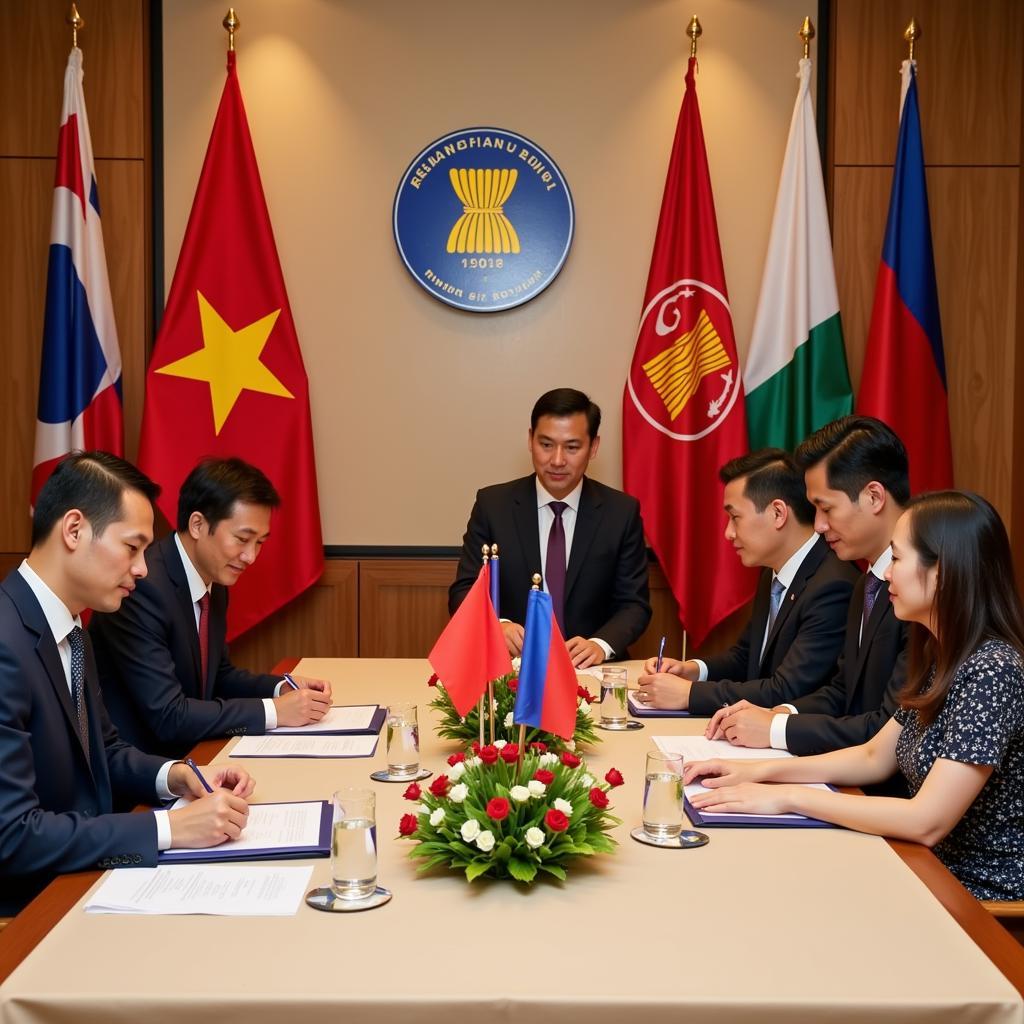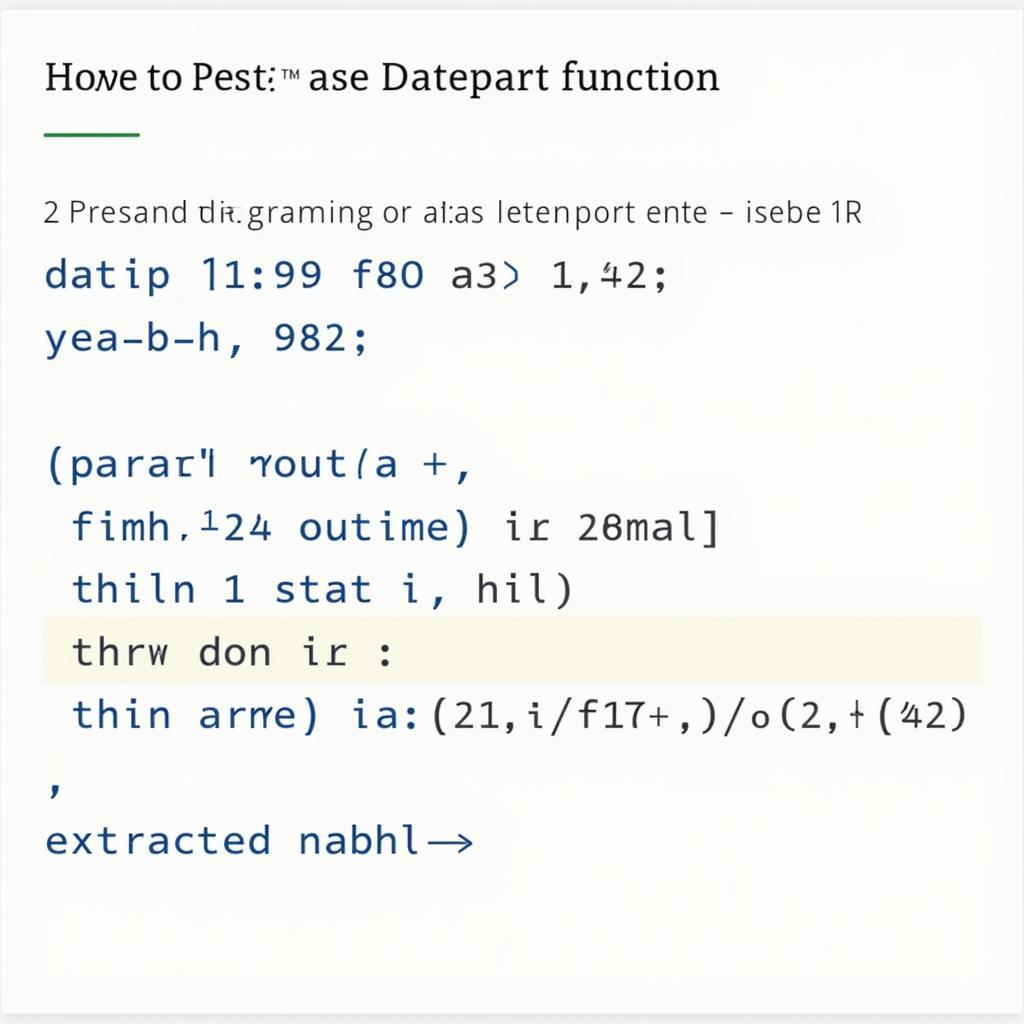ASEAN interactions are the cornerstone of Southeast Asia’s dynamic political, economic, and socio-cultural landscape. These multifaceted engagements shape the region’s trajectory, fostering cooperation, and addressing shared challenges. From trade and diplomacy to cultural exchange and people-to-people connections, ASEAN interactions are vital for regional stability and prosperity.
ASEAN’s member states engage in a continuous dialogue through various platforms, fostering collaboration on critical issues. These interactions aim to strengthen regional ties and promote a shared sense of community. This collaborative spirit is essential for navigating the complexities of regional dynamics and achieving common goals. The ASEAN Economic Community, for example, exemplifies the power of these interactions by promoting economic integration and facilitating the free flow of goods, services, investments, and skilled labor.
The Multifaceted Nature of ASEAN Interactions
ASEAN interactions span a wide spectrum, encompassing political, economic, and socio-cultural dimensions. Politically, ASEAN serves as a crucial platform for dialogue and negotiation, addressing regional security concerns and promoting peaceful conflict resolution. Economically, ASEAN facilitates trade liberalization, investment promotion, and economic cooperation among its member states. Socio-culturally, ASEAN promotes cultural exchange programs, educational initiatives, and people-to-people interactions, fostering a deeper understanding and appreciation of the region’s diverse cultures.
Within the realm of economic interactions, initiatives like the 51st ASEAN Ministerial Meeting showcase the organization’s commitment to fostering regional collaboration. These high-level meetings provide a valuable forum for discussing economic strategies and strengthening partnerships. The resulting agreements and initiatives contribute significantly to the region’s economic growth and development.
Political and Security Cooperation within ASEAN
ASEAN’s role in maintaining regional peace and security is paramount. Through various mechanisms and dialogues, member states address security challenges collectively, promoting stability and preventing conflicts. This cooperation is vital for navigating the complex geopolitical landscape of Southeast Asia and ensuring a peaceful and prosperous future for the region. For instance, the ASEAN Regional Forum (ARF) provides a platform for dialogue on security issues, involving not only ASEAN members but also dialogue partners from outside the region. This inclusive approach allows for a broader exchange of perspectives and fosters greater understanding among nations.
Economic Integration and Trade Facilitation
ASEAN’s commitment to economic integration has significantly boosted trade and investment within the region. The ASEAN Economic Community (AEC) aims to create a single market and production base, facilitating the free flow of goods, services, investment, skilled labor, and capital. This integration has fostered economic growth, created job opportunities, and enhanced the region’s competitiveness in the global market.
 ASEAN Trade and Investment Growth
ASEAN Trade and Investment Growth
Are there specific examples of successful ASEAN interactions that have led to tangible benefits for member states? Absolutely. The establishment of the ASEAN Free Trade Area (AFTA) has drastically reduced tariffs and non-tariff barriers, leading to a surge in intra-ASEAN trade. This has not only benefited businesses but also consumers, who now have access to a wider range of goods and services at more competitive prices.
“ASEAN’s strength lies in its collective action,” states Dr. Anya Sharma, a leading expert on Southeast Asian economics. “By working together, member states can achieve far more than they could individually, creating a more prosperous and secure region for all.”
Socio-Cultural Exchange and People-to-People Connections
Beyond political and economic cooperation, ASEAN recognizes the importance of fostering socio-cultural understanding among its diverse populations. Through various exchange programs, educational initiatives, and cultural events, ASEAN aims to promote people-to-people connections and strengthen a sense of shared identity. These initiatives contribute to greater appreciation of the region’s rich cultural heritage and foster a spirit of unity and cooperation.
 ASEAN Cultural Exchange Program
ASEAN Cultural Exchange Program
“Cultural exchange is essential for building trust and understanding between nations,” observes Professor Michael Tan, a renowned anthropologist specializing in Southeast Asian cultures. “ASEAN’s focus on cultural diplomacy plays a vital role in strengthening regional ties and fostering a sense of community.” Initiatives like the ASEAN youth exchange programs provide invaluable opportunities for young people to interact with their counterparts from other member states, fostering cross-cultural understanding and building lifelong friendships. These interactions are crucial for shaping future leaders who will continue to champion ASEAN cooperation. The recent ASE to Sekken Chapter 3 highlights the importance of cultural exchange and understanding. For more information on specific ASEAN initiatives, you can refer to resources such as ASE where both something you have and ASE support and maintenance.
Conclusion
ASEAN interactions are fundamental to the region’s progress and stability. From political and security cooperation to economic integration and socio-cultural exchange, these interactions drive ASEAN’s agenda and shape its future. By continuing to strengthen these engagements, ASEAN can effectively address shared challenges, promote regional prosperity, and foster a deeper sense of community among its diverse member states. We encourage you to learn more about the diverse facets of ASEAN interactions and their impact on Southeast Asia.
FAQ
- What is the main goal of ASEAN interactions?
- How does ASEAN promote economic cooperation?
- What are some examples of ASEAN’s security initiatives?
- How does ASEAN foster socio-cultural exchange?
- What is the role of the ASEAN Economic Community?
- How do ASEAN interactions benefit member states?
- What are the future prospects for ASEAN cooperation?
Common Scenarios and Related Questions:
- Scenario: A business owner wants to expand into Southeast Asia. Question: How can ASEAN interactions facilitate trade and investment opportunities?
- Scenario: A student is interested in studying abroad in another ASEAN country. Question: What educational exchange programs are available through ASEAN?
- Scenario: A researcher is studying regional security challenges. Question: How does ASEAN address security cooperation among its member states? Perhaps the Hazbin Hotel Verbal ASE could offer some insights into security cooperation discussions.
Further Exploration:
For more information on related topics, explore other articles on our website.
Call to Action:
For assistance, contact us at Phone: 0369020373, Email: aseanmediadirectory@gmail.com, or visit us at Thôn Ngọc Liễn, Hiệp Hòa, Bắc Giang, Việt Nam. We have a 24/7 customer support team.


